DBMIBS 2025: Digital Yacht’s NjordLINK developer friendly boat monitoring solution
Digital Yacht’s streak of specialized and interesting NMEA 2000 products continues with NjordLINK. NjordLINK is a $139 gateway that connects to a boat WiFi network and shares data from the NMEA 2000 network with Digital Yacht’s Njord cloud. But, NjordLINK and the Njord cloud aren’t just a one way repository of data. Digital Yacht plans an entire ecosystem of cloud apps that can alert the boat owner and send data back to the boat.
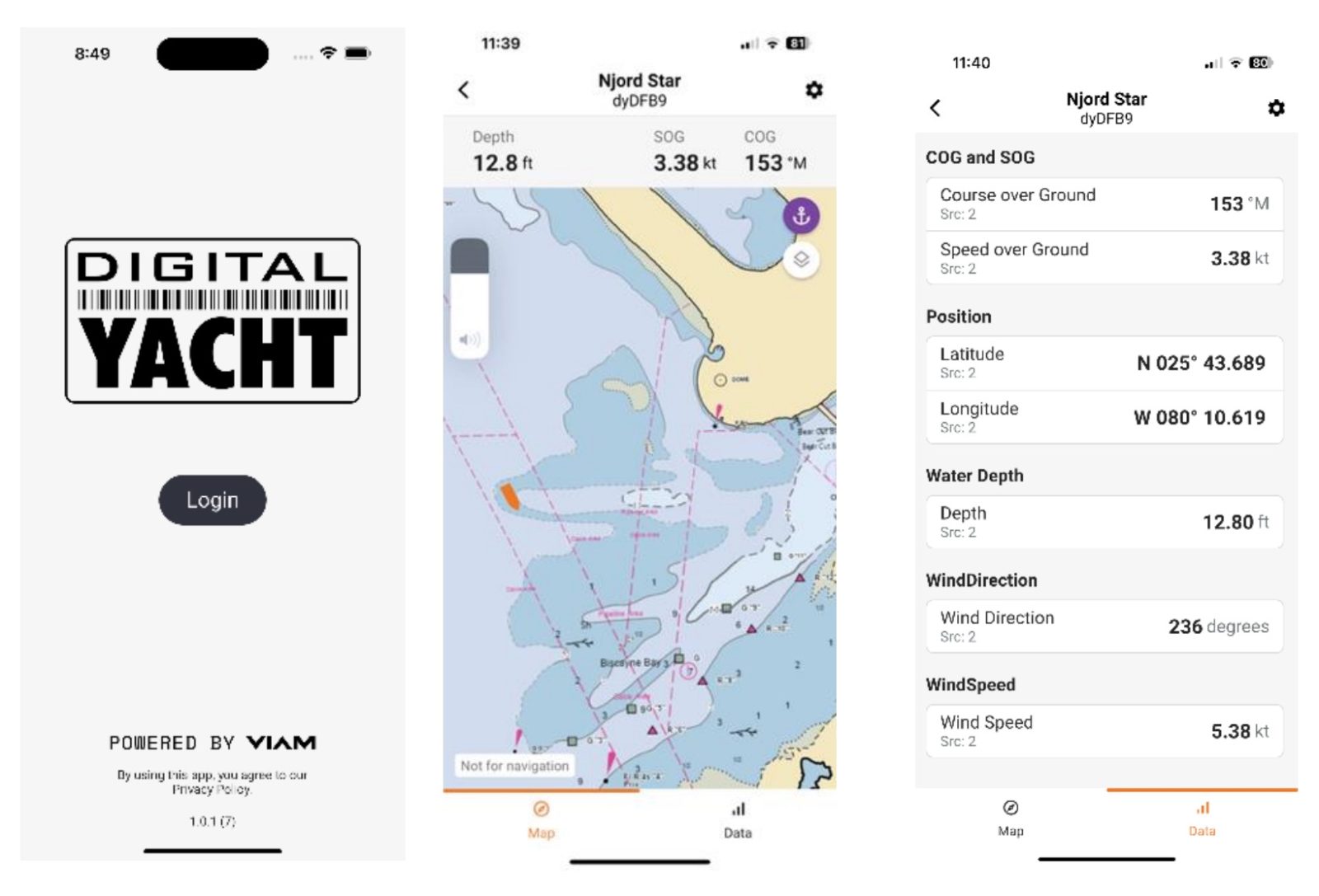
The basics of NjordLINK’s cloud system sound a lot like many other boat monitoring products. You buy a piece of hardware and install it on your boat. That hardware then sends data to a centralized cloud server and you can view the data from anywhere. But, there are a few pretty major departures from many boat monitors. First, NjordLINK itself doesn’t have sensors or circuits to monitor sensors. Instead, it connects to the NMEA 2000 network and reads what’s on the network. Second, although Digital Yacht’s app provides a familiar boat monitoring interface, that’s just the beginning of what you can do with NjordLINK.
With two-way communications between NjordLINK and the Njord Cloud plus an extensible approach that welcomes app developers, NjordLINK provides a platform on which a huge amount of functionality can be developed. The Njord Cloud is powered by Viam’s cloud technology. Viam’s secure cloud offers easy access to data, extensive data manipulation tools, and AI.
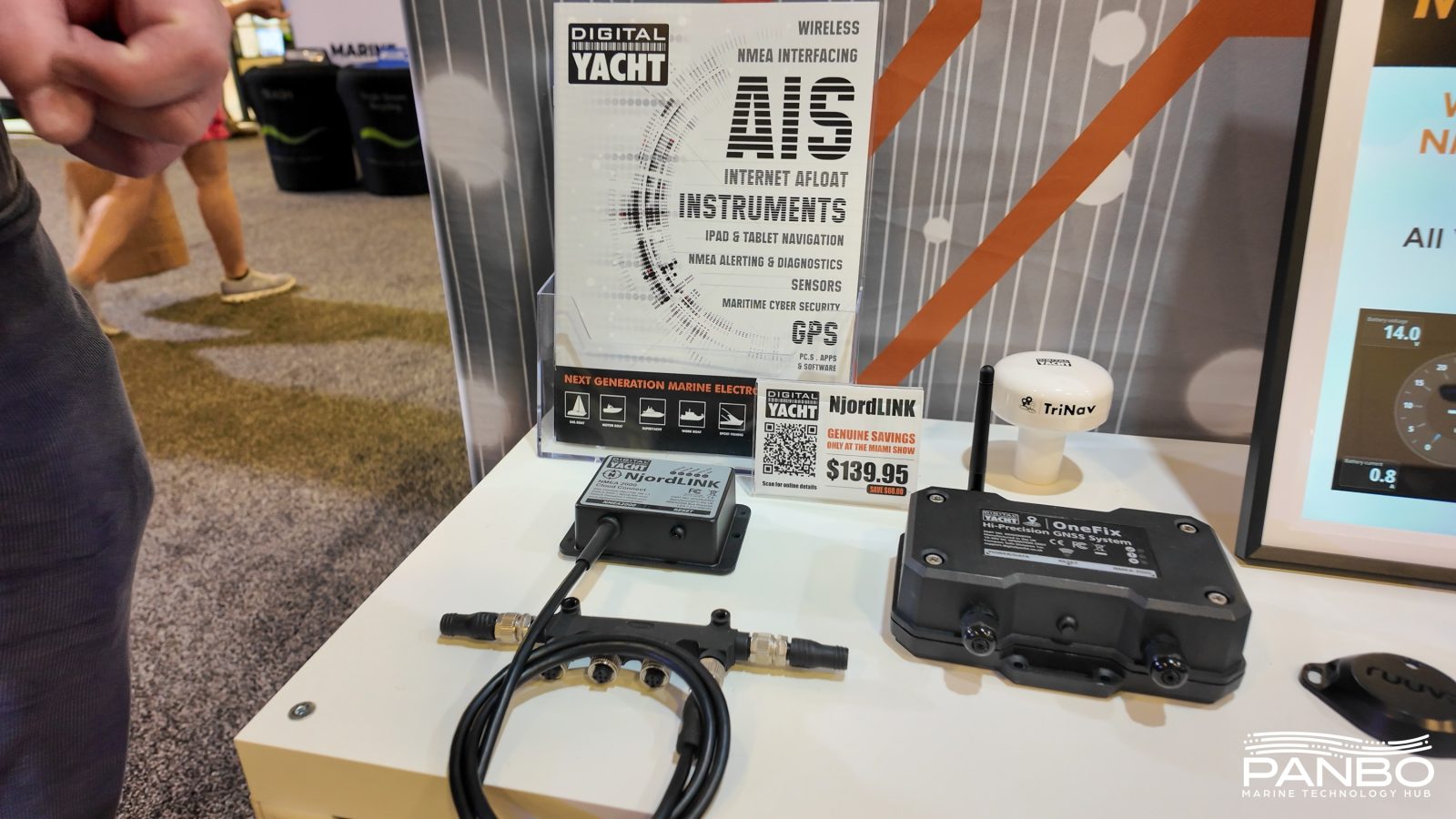
NjordLINK hardware does not have a cellular radio so you must provide internet access via WiFi. The hardware serves as a conduit between the boat’s NMEA 2000 network and the Njord Cloud. All communications are fully encrypted and bi-directional so cloud apps can control NMEA 2000 components like digital switching or raise an alert on the network. NjordLINK draws power from the NMEA 2000 network so installation consists of connecting it to a NMEA 2000 drop port.
NjordLINK’s reliance on NMEA 2000 may make some sensor data a little more challenging. For example, getting data about bilge pump runs onto a NMEA 2000 network requires some sort of run-indicator-module like those from Maretron and Yacht Devices. But, a lot of data including position, depth, and potentially weather are very likely to be found on the NMEA 2000 network and Digital Yacht’s approach avoids duplicating those sensors.
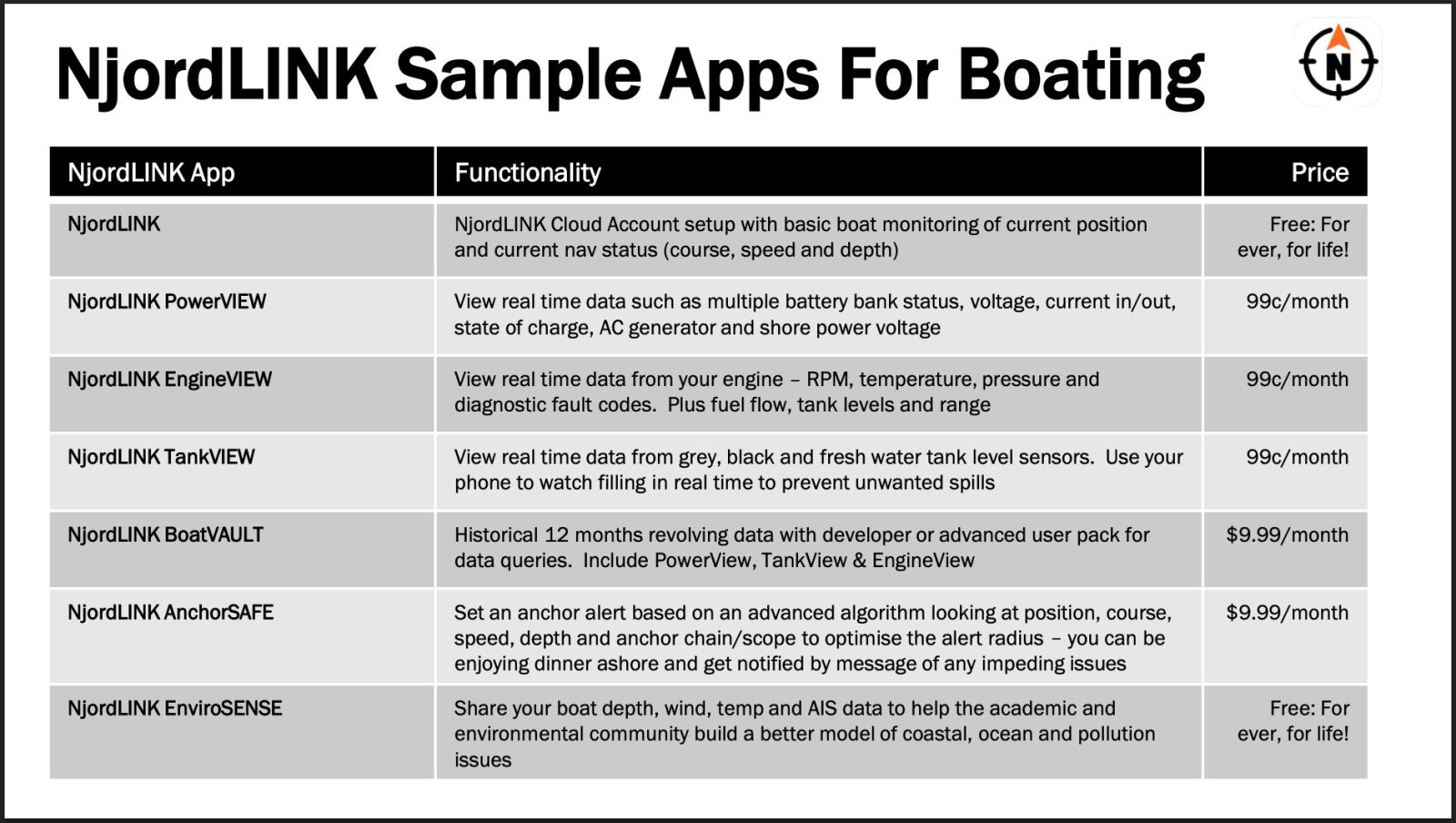
In another big departure from traditional boat monitoring systems, NjordLINK offers basic data for free. Additionally, access to electrical, engine, and tank data is available for $0.99 per data type per month. Full access to a rolling 12-months of boat data is $9.99 a month. Lastly, Digital Yacht promises the NjordLINK AnchorSAFE app will perform advanced calculations to ensure your anchored boat remains where you left it. They say it will warn of impending issues based on any anomalies detected by the app’s advanced calculations.
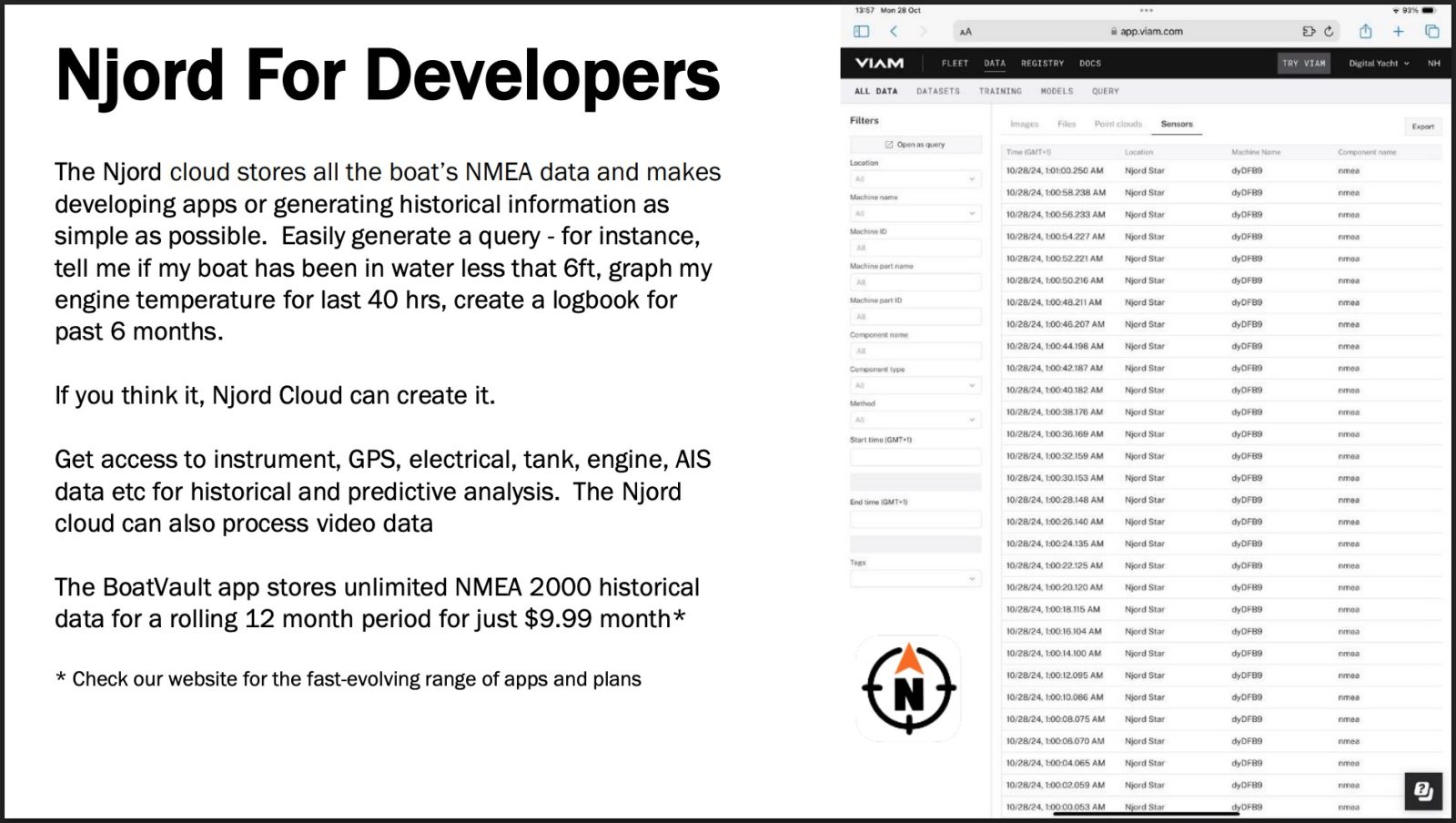
App choices aren’t limited to just those Digital Yacht publishes. The Njord Cloud is fully accessible to developers and Digital Yacht offers example applications in both Python and TypeScript. Developer access publicly available by submitting a developer request.
NjordLINK has just started shipping so application choices are a little limited currently limited. But, it will be interesting to see what the development community produces. In the meantime, especially for boats with well built-out NMEA 2000 networks, NjordLINK offers an excellent value and easy way to remotely view what’s happening on your boat.



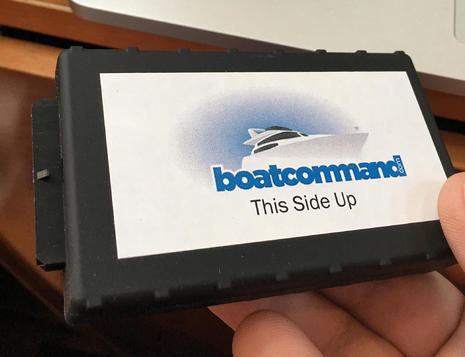
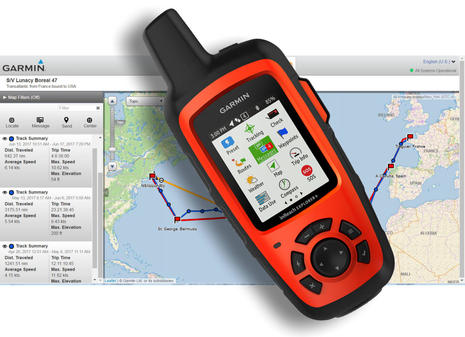
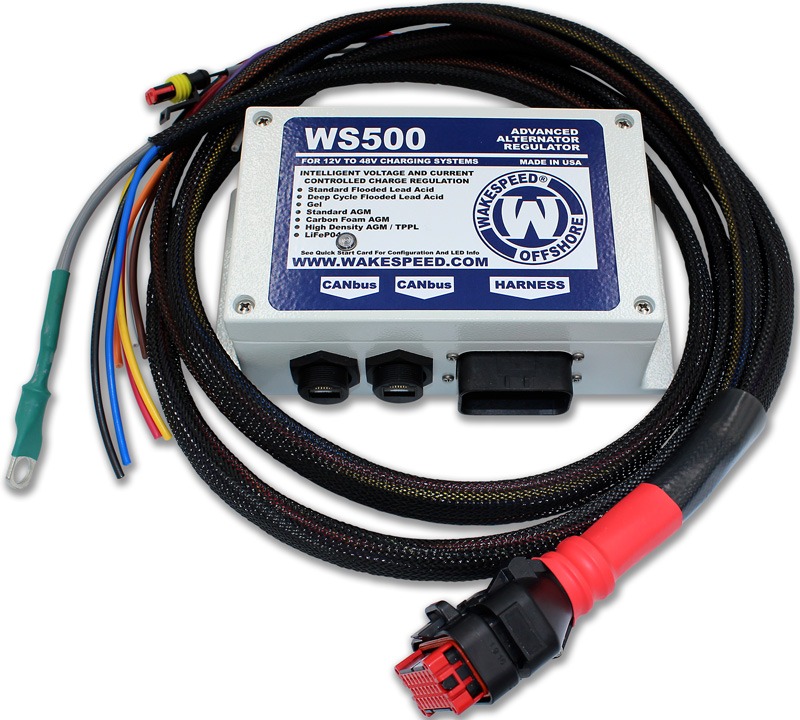







As a DIY tinkerer, I don’t see any value in NjordLINK, but rather prefer the flexibility, expanded development options and data control, available community and DIY developed devices that a system like OpenPlotter/SignalK provides. And just as or for some more important, is that the cost is virtually nothing compare to commercial products and a paid subscriptions. That said, DIY is not for everyone, and I personally have pointed many boaters to a simpler plug and play solution. But this is not the case, it a middle ground for developers. Maybe it has value for professionals who provide regular paid service for those who view there services as a typical boating expense.